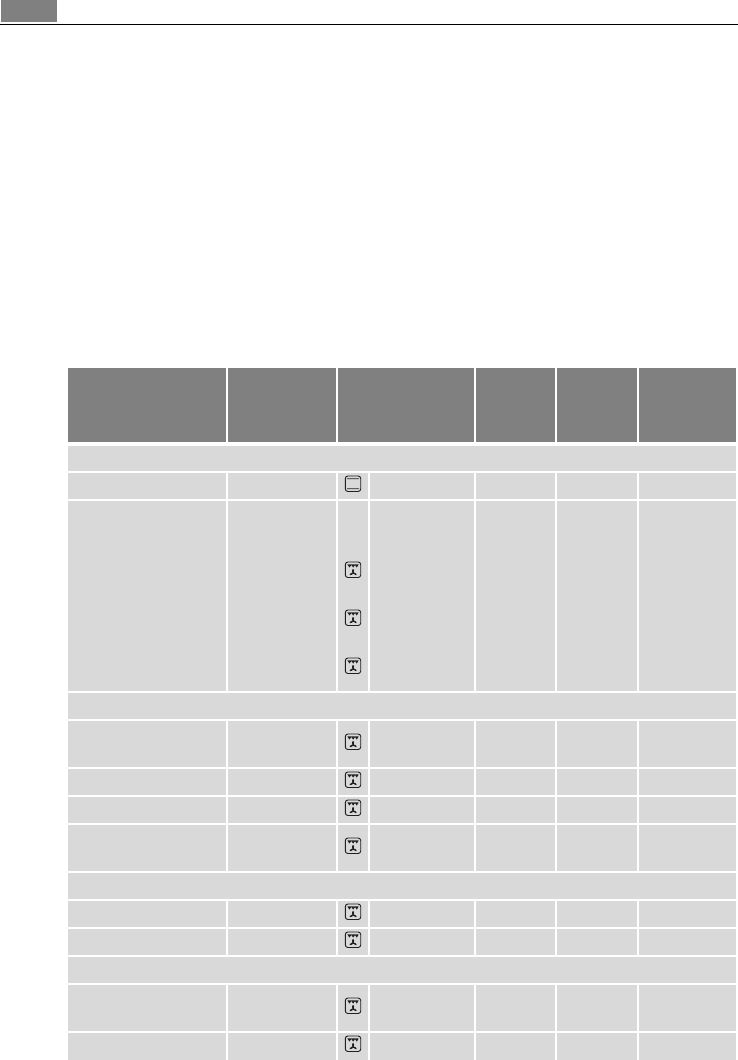
Uses, Tables and Tips24
3 Tips on using the Roasting Table
The information given in the following table is for guidance only.
• We recommend cooking meat and fish weighing 1kg or more in the oven.
• To prevent meat juices or fat from burning onto the ovenware, we recommend adding
some liquid.
• If required, turn the roast (after 1/2 - 2/3 of the cooking time).
• Baste large roasts and poultry with their juices several times during roasting. This will
give better roasting results.
• You can switch the oven off about 10 minutes before the end of the roasting time, in
order to utilise the residual heat.
Roasting table
Type of meat Quantity Ovenfunction
Shelf
position
Tempera-
ture
°C
Time
Hours mins.
Beef
Pot roast 1-1.5 kg Conventional 1 200-250 2:00-2:30
Roast beef or fillet
per cm. of
thickness
- rare
per cm.
of thickness
Rothitherm 1 190-200
1)
0:05-0:06
- medium
per cm.
of thickness
Rothitherm 1 180-190 0:06-0:08
- well done
per cm.
of thickness
Rothitherm 1 170-180 0:08-0:10
Pork
Shoulder, neck, ham
joint
1-1.5 kg Rothitherm 1 160-180 1:30-2:00
Chop, spare rib 1-1.5 kg Rothitherm 1 170-180 1:00-1:30
Meat loaf 750 g-1 kg Rothitherm 1 160-170 0:45-1:00
Porkknuckle (pre-
cooked)
750 g-1 kg Rothitherm 1 150-170 1:30-2:00
Veal
Roast veal 1 kg Rothitherm 1 160-180 1:30-2:00
Knuckle of veal 1.5-2 kg Rothitherm 1 160-180 2:00-2:30
Lamb
Leg of lamb, roast
lamb
1-1.5 kg Rothitherm 1 150-170 1:15-2:00
Saddle of lamb 1-1.5 kg Rothitherm 1 160-180 1:00-1:30


















